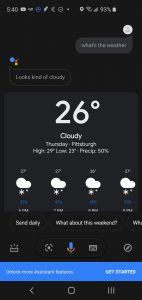Hello,
This week I got my computer back and life is much better. I have been able to work on progress on regetting the Django web application deployed to AWS. It is still proving to be a little tricky.
As for OpenCV hand recognizing and NN classifier, I tested the performance and realized the simploy normalizing the image had very poor accuracy (<60 percent), and as a result the classifier would also be very bad. Thus, given Sung’s SVM is some good stuff, we have decided to abandon the secondary classifier.
But, instead I am now using OpenCV to generate different lighting conditions given our test image. By using Gamma correction, we can now artificially simulate different lighting conditions, to test our classifier. Also, I am experimenting with using OpenCV to resize images, as smaller images have better OpenPose performance, seeing how small we can go before it stops working.
Next week, I plan to finally wrap up the web application deployment and hopefully smash my old computer for Marios.
